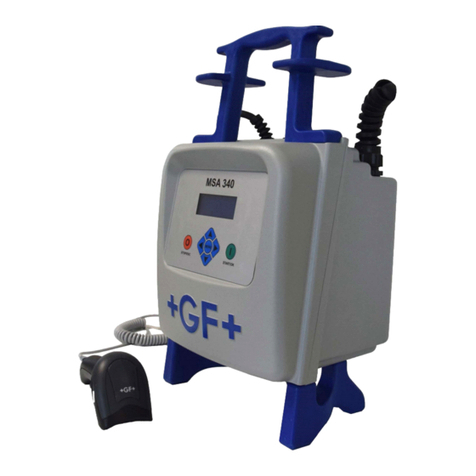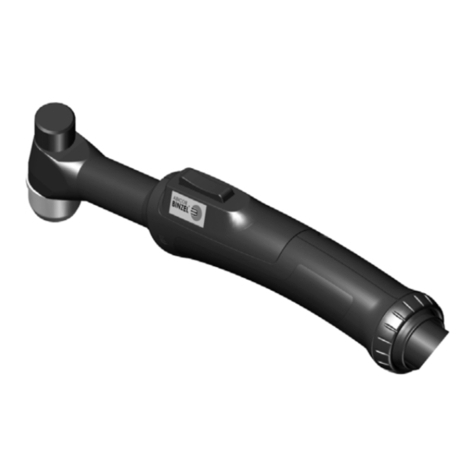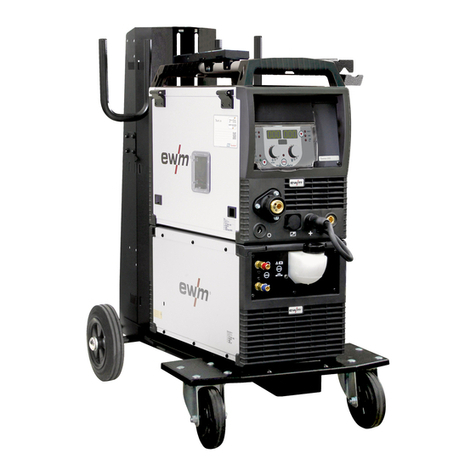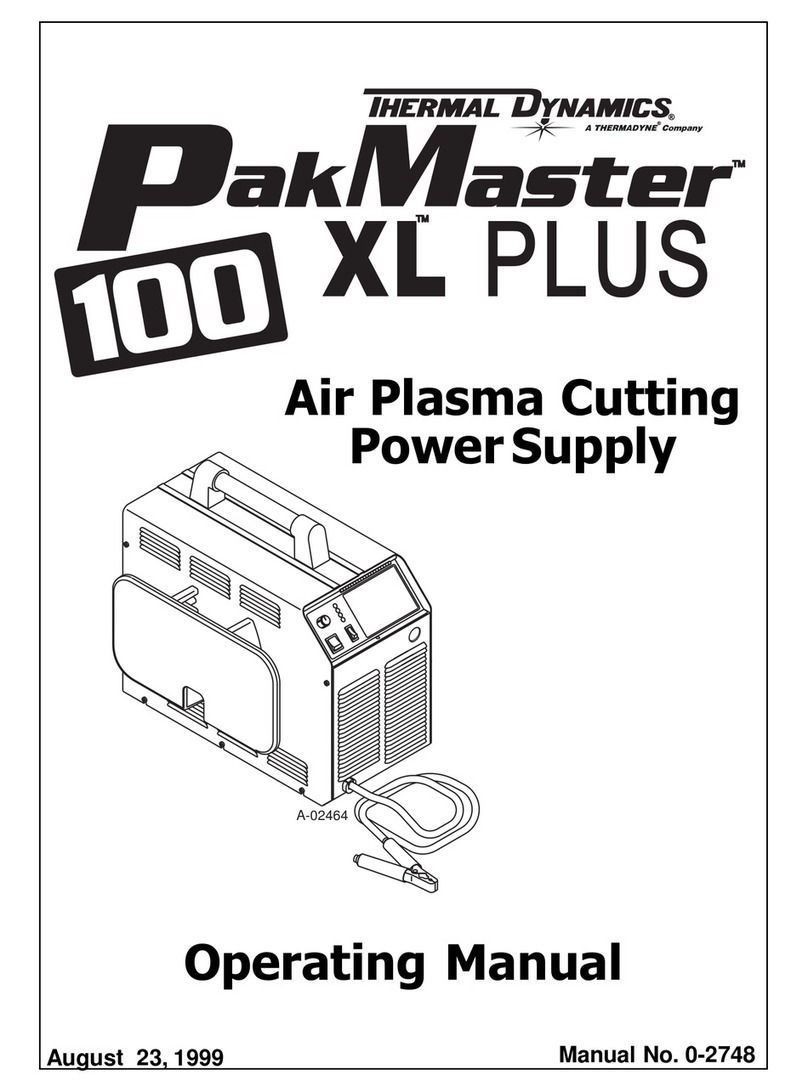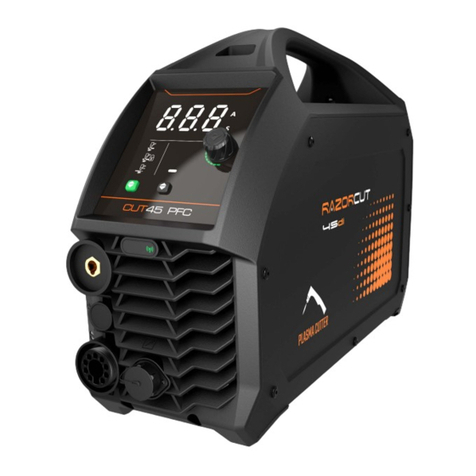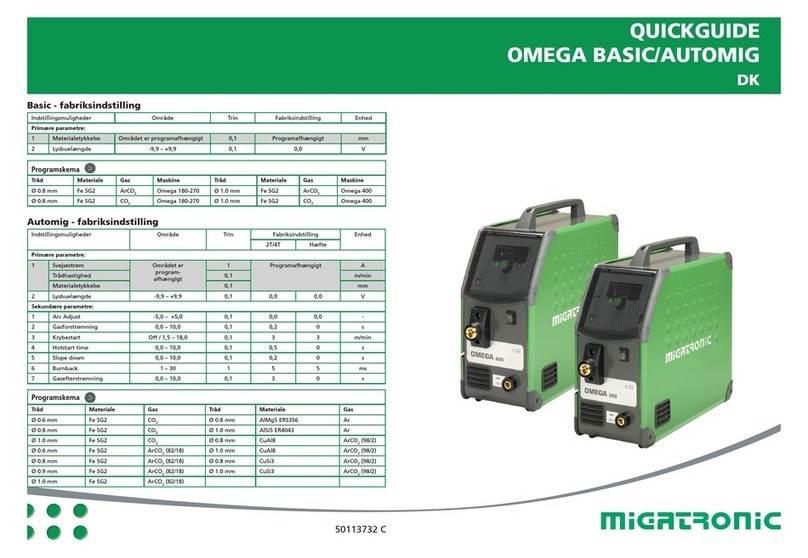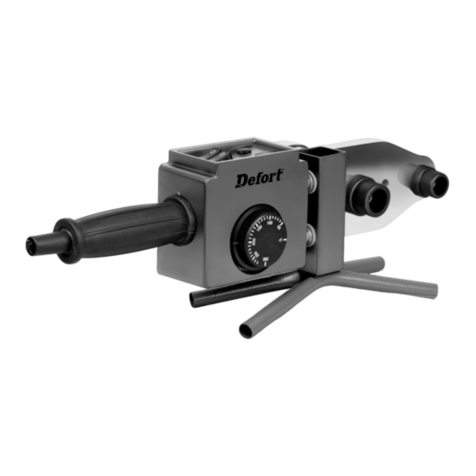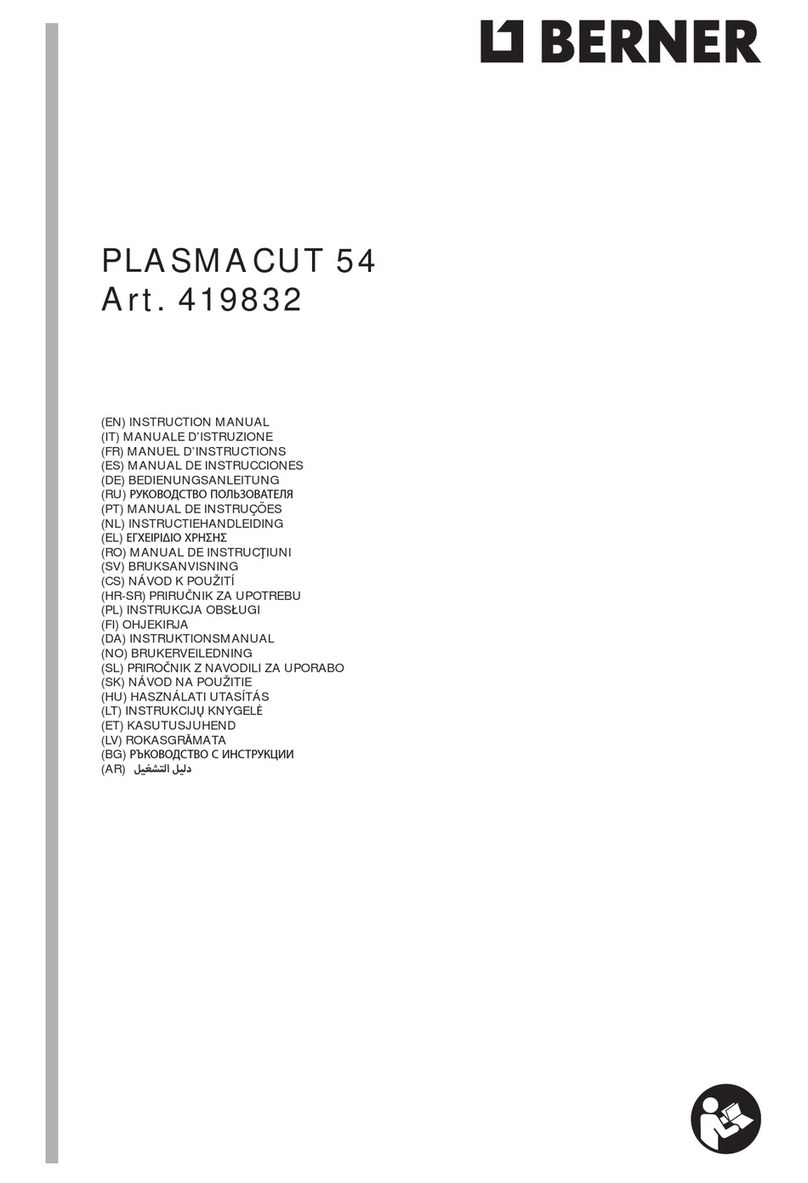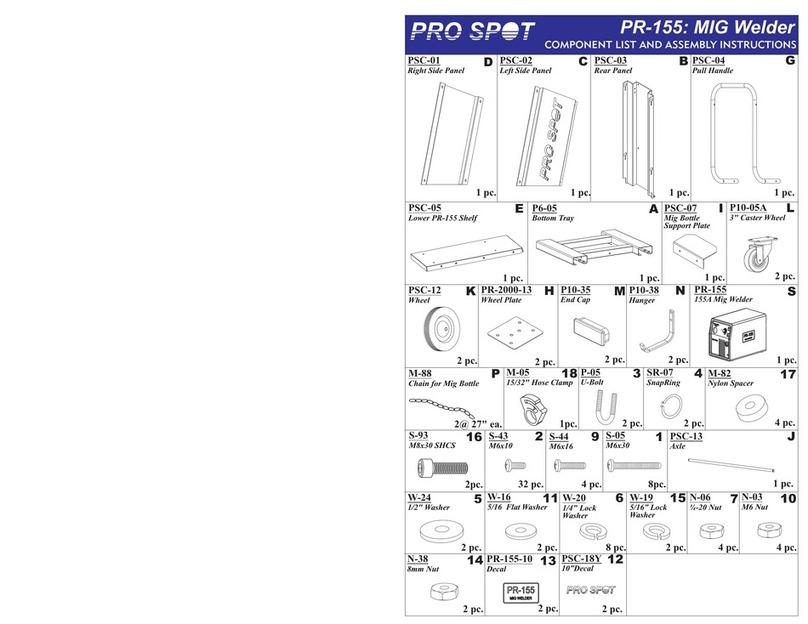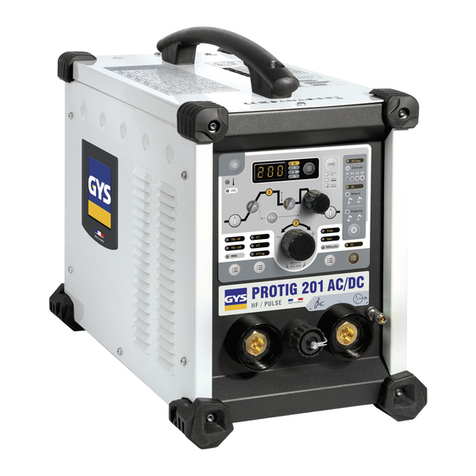
PLASTIC WELDING
Basic requirements for plastic welding. TIME, TEMPERATURE & PRESSURE
Most plastics used today are thermoplastics which can be softened by heat and
then hardened again upon cooling. Thermoplastics are generally suitable for re-
pair by welding. Thermoset plastics, on the other hand, do not soften by heating
after their initial molding. Thermosets cannot be welded with heat.
Four basic rules for plastic welding are suggested:
1. Weld with like material. Only like materials can be fusion welded, for exam-
ple, PP rod on PP plastic. If material is unknown, then the ber-ex hot melt
adhesive rods can be used as described below. Fiber-ex is an adhesive and
will not fusion bond with the base material so the rod should be used with a
mesh screen if strength is required; otherwise, it can be used to ll gaps/holes
where strength is not required.
2. Correct temperature. The plastic should be pre-heated. Select the right tem-
perature matched to the material being repaired.
3. Even pressure. When welding with rods, the pressure is applied by pressing
on the welding rod. For overlap welding of lms and tarpaulins, the necessary
pressure is applied with the help of the optional pressure roller.
4. Constant welding speed. To achieve a good weld, an even working speed
should be maintained. When welding plastics with the Master Proheat, the
following three variables are critical to achieve a good weld.
TIME, TEMPERATURE & PRESSURE
• Time. If you move the heat tool too fast or too slow, the quality of the weld will
be compromised. Maintain constant speed during the welding process.
• Temperature. Set the welding temperature for the plastic that you are welding.
Adjust the temperature and airow to obtain the best setting combination for
the plastic you are working with. Locking-in the setting enables you to main-
tain the set temperature throughout the welding process. The Master Proheat
Model PH-1400A has the ability to tightly control and lock-in the temperature
through an on-board electronically controlled temperature and air speed sys-
tem. See the heat gun instruction manual on how to lock-in settings.
• Pressure. Pressure is applied by pushing down on the welding rod while weld-
ing or, if butt welding, on the two edges that are being welded together. Master
Appliance Corp. manufactures precise welding tips that help the welder apply
equal pressure throughout the welding process.
Thermoplastic welding temperatures.
There are different types of plastic so it is important to identify the type you are
working on to ensure the proper welding rod is being used. Thermoplastics can
be formed with heat and can be easily welded. Thermosets (Duroplastics and
Elastomers) cannot be welded. Thermosets are hardened with heat but, once
hardened, their shape cannot be changed with heat. Elastomers (rubber) can be
formed with heat but cannot be welded.

